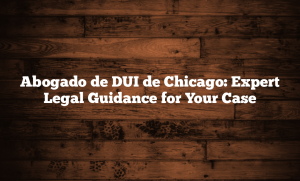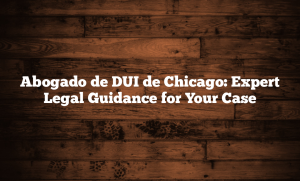Why does tinker v. des moines remain an important precedent-setting case?
In the crucible of social and political upheaval during the 1960s, a seemingly simple act of protest unfolded within the walls of Des Moines schools, forever altering the landscape of student rights. Tinker v. Des Moines emerged as a defining moment, transcending the symbolic black armbands worn by students and leaving an indelible mark on the constitutional framework that governs the expressive rights of students. This exploration delves into the journey from armbands to the establishment of precedence, unraveling the layers of Tinker’s lasting impact on student rights.
Table of Contents
Toggle
Armbands as Symbols: The Catalyst for Tinker
The Protest that Echoed: Vietnam War and Student Activism:
The backdrop of Tinker was a nation grappling with the complexities of the Vietnam War. In this charged atmosphere, students in Des Moines chose a silent yet powerful form of protest – wearing black armbands to express their opposition to the war. Little did they know that this act of defiance would set in motion a legal saga that would resonate far beyond the confines of their local schools.
The Genesis of Tinker: Armbands as a Catalyst for Change:
Tinker v. Des Moines materialized from the tensions surrounding these black armbands. The Supreme Court, in its landmark 1969 decision, not only validated the students’ right to wear them but also laid the foundation for a transformative precedent. The armbands became emblematic not only of a particular protest but of the broader struggle for student rights in a time of social upheaval.
Tinker’s Ruling: Establishing the Precedent
The Resonating Majority Opinion: Justice Fortas’ Pronouncement:
At the heart of Tinker lies Justice Abe Fortas’ pronouncement that students do not “shed their constitutional rights to freedom of speech or expression at the schoolhouse gate.” This declaration was more than a legal judgment; it was a seismic shift in the understanding of student rights, elevating them to a constitutional pedestal. Tinker became the lodestar for future cases, firmly establishing that students, like any other citizens, enjoy the protection of the First Amendment.
The Balancing Act: Substantial Disruption Standard:
However, Tinker’s precedent did not grant an unconditional right to express. It introduced the “substantial disruption” standard, recognizing the delicate balance between students’ expressive rights and the school’s duty to maintain order. This standard became the touchstone for evaluating the permissibility of student expression, ensuring that the exercise of rights did not unduly disrupt the educational environment.
Layers Unveiled: Subsequent Challenges and Nuances
Bethel School District v. Fraser (1986): Expanding the Scope:
As Tinker’s legacy solidified, subsequent cases sought to delineate its boundaries. Bethel School District v. Fraser marked a departure by allowing schools to discipline students for lewd or indecent speech, irrespective of its disruptive potential. This nuanced shift added layers to Tinker’s precedent, highlighting the contextual nature of speech within the educational setting.
Morse v. Frederick (2007): Further Complexity:
Morse v. Frederick, commonly known as the “Bong Hits 4 Jesus” case, introduced another layer of complexity. The Court’s decision to uphold the punishment of a student for displaying a banner at a school-sponsored event broadened the scope of what constituted permissible speech within the educational context. Tinker’s threads faced challenges, and its application became a nuanced endeavor as the courts navigated through evolving scenarios.
Contemporary Reflections: Adapting Tinker to the Digital Age
Digital Expression: The Challenge of Cyberspace:
In the digital age, where the boundaries between the schoolyard and cyberspace blur, Tinker faces new challenges. The question of whether Tinker extends to online expression has become a pivotal point of contention. Courts grapple with the task of applying a precedent crafted in an analog era to the dynamic and expansive realm of the internet, where the contours of disruption are less tangible but potentially more impactful.
Cyberbullying and Tinker’s Relevance:
The surge in cyberbullying cases places Tinker’s substantial disruption standard under scrutiny. The harm inflicted by online speech brings forth the delicate task of balancing the protection of students from harm with the preservation of their expressive rights. Tinker, as a guiding precedent, finds itself at the forefront of discussions on how to navigate this complex terrain.
Preserving the Essence: Tinker as a Guiding Light
Education as a Constitutional Laboratory:
Tinker v. Des Moines recognized educational institutions as “laboratories of democracy,” fostering an environment where students learn not only academic subjects but also the rights and responsibilities of citizenship. Its enduring impact lies not just in the specific rulings but in the broader principles it champions – the acknowledgment that students, as future citizens, have a stake in the democratic process and deserve protection for their expressive rights.
The Ongoing Balancing Act: Tinker in Today’s Educational Landscape:
As educational landscapes evolve, Tinker’s legacy endures as a guiding light. The delicate balancing act between free expression and maintaining a conducive learning environment remains a central challenge for educators, administrators, and courts alike. Tinker’s threads weave through contemporary debates, reminding us that the essence of student rights lies in fostering an environment where diverse voices can be heard without compromising the order essential for effective education.
Conclusion: Tinker’s Timeless Reverberation
From the symbolic act of wearing armbands to the establishment of a constitutional precedent, Tinker v. Des Moines has transcended its origins to become a touchstone in the evolving narrative of student rights. Its lasting impact is not confined to a particular era but reverberates through time, shaping how we understand the delicate interplay between the rights of students and the responsibilities of educational institutions. Tinker’s journey, from armbands to precedence, is a testament to the enduring relevance of constitutional principles in navigating the complex terrain of student rights.




